Healing is personal—but it doesn’t have to be lonely. For many people on the road to recovery, especially those learning to use a prosthetic, support makes all the difference. It’s not just about doctors and therapists. It’s about people. People who understand. People who’ve been there. People who can say, “I get it.”
At RoboBionics, we believe that recovery becomes stronger when it’s shared. That’s why we bring together the power of peer support and the joy of gamification. It’s a simple idea with a big impact: when people connect through progress, they heal faster, smile more, and feel less alone.
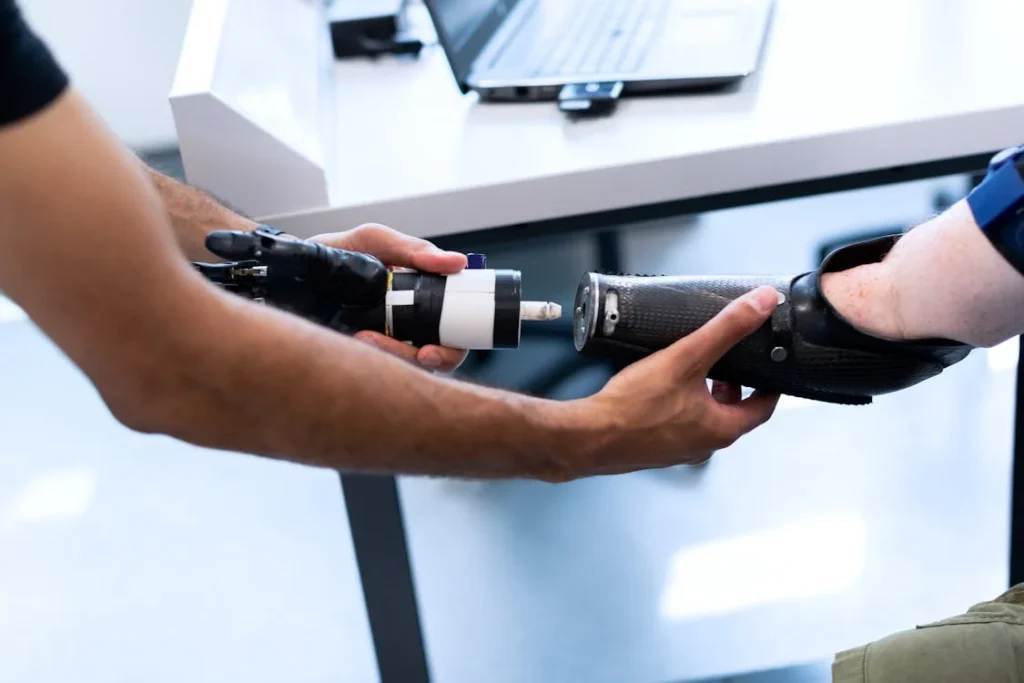
The Healing Power of People Who Understand
Why Peer Support Works When Nothing Else Does
When someone is learning to use a prosthetic—especially something as advanced as our Grippy™ Bionic Hand—they are doing more than just physical training. They are learning to live again. That means they face fears, doubts, and questions every single day. “Will I ever be able to do things on my own again?” “Is this normal?” “Why is this so hard?”
In those moments, hearing from someone who has been through the same journey can mean everything. A peer isn’t just a helper—they’re a mirror. They show you what’s possible. They remind you that you’re not the only one who struggles. They give you answers, encouragement, and quiet understanding that even the best doctors can’t always provide.
That’s the heart of peer support. It’s real, human connection. No judgement. No pressure. Just one person saying to another, “I’ve felt that too—and I made it through.”
At RoboBionics, we’ve watched how much faster people progress when they’re part of a supportive group. When one person earns a badge in our rehab app, others cheer them on. When someone hits a low point, another steps in to lift them up. The shared experience becomes a safety net. And in that net, healing becomes easier.
Gamified Recovery Isn’t Just Solo Practice Anymore
Gamification brings fun, challenge, and measurable progress to recovery. But when you add peer support to that system, something new happens. It stops being just “my journey” and starts to feel like “our journey.”
Every level someone completes, every point they earn, becomes a moment that others can relate to. “I remember when I did that!” “That level was tough for me too!” Suddenly, progress becomes a conversation. A shared milestone. A reason to talk, to laugh, to keep going.
That’s why our gamified rehab platform is built with connection in mind. It’s not just about the points—it’s about the people behind the points. When a user unlocks a new achievement, others can see it. When someone struggles with a level, they can ask for advice. When someone logs in every day, they start to inspire others to show up too.
It’s recovery that’s rooted in community. And that kind of recovery sticks.
Emotional Support That Feels Natural, Not Forced
One of the most beautiful things about peer support is how natural it feels. It’s not about scheduled calls or formal meetings. It’s about little check-ins. Friendly nudges. Honest stories shared at the right time.
Gamification makes those moments happen more often. When people are playing the same game, working toward the same goals, support happens without even trying. “You got that badge already? Amazing!” “Struggling with that task too—want to team up?” These quick, simple interactions build trust. And that trust turns strangers into teammates.
We’ve seen people who were too shy to talk in rehab open up once they saw others playing the same game. We’ve watched users form WhatsApp groups, share screenshots, and celebrate each other’s progress in real time. None of it was planned. It just happened—because the game gave them a reason to talk. And the talking gave them strength.
Reducing Isolation in the Recovery Journey
Amputation can feel incredibly isolating. Suddenly, the world looks different. Daily tasks become mountains. People stare. Friends don’t always understand. All of this can lead to deep feelings of loneliness.
That’s why building peer connections is so important. It tells people, “You’re not alone in this.” When someone shares their story of learning to use their Grippy™ Mech Finger, and someone else says, “Me too,” the walls start to come down. Healing gets lighter. The weight gets shared.
Gamification adds fuel to this connection. It makes recovery a game—but also a reason to reach out. When someone sees their name next to someone else’s on a leaderboard, they start to feel less invisible. When a message pops up saying “You and Raj both earned the Stability Star this week!” it’s more than a notification—it’s a touchpoint. A sign that says, “You’re part of something.”
These small, smart nudges help people stay engaged. And more importantly, they help people stay connected.
Building a Culture of Celebration, Not Comparison
One danger in group settings is comparison. “She’s faster than me.” “He’s doing better.” That can drain motivation. But gamified peer support turns that around. It shifts the focus from competition to celebration.
That’s because the rewards in our system are personal. They’re tied to effort, not just results. One user might earn a badge for steady practice. Another might unlock a milestone for improving grip control. Both get to celebrate. Both feel seen.
And when those wins are shared in a peer group, they create a ripple effect. “Wow, you did that? I’m going to try it too.” “Your story just made my day.” Instead of jealousy, you get inspiration. Instead of pressure, you get purpose.
This is the culture we build at RoboBionics. A culture of cheerleaders, not critics. A place where every person’s progress is proof that growth is possible.
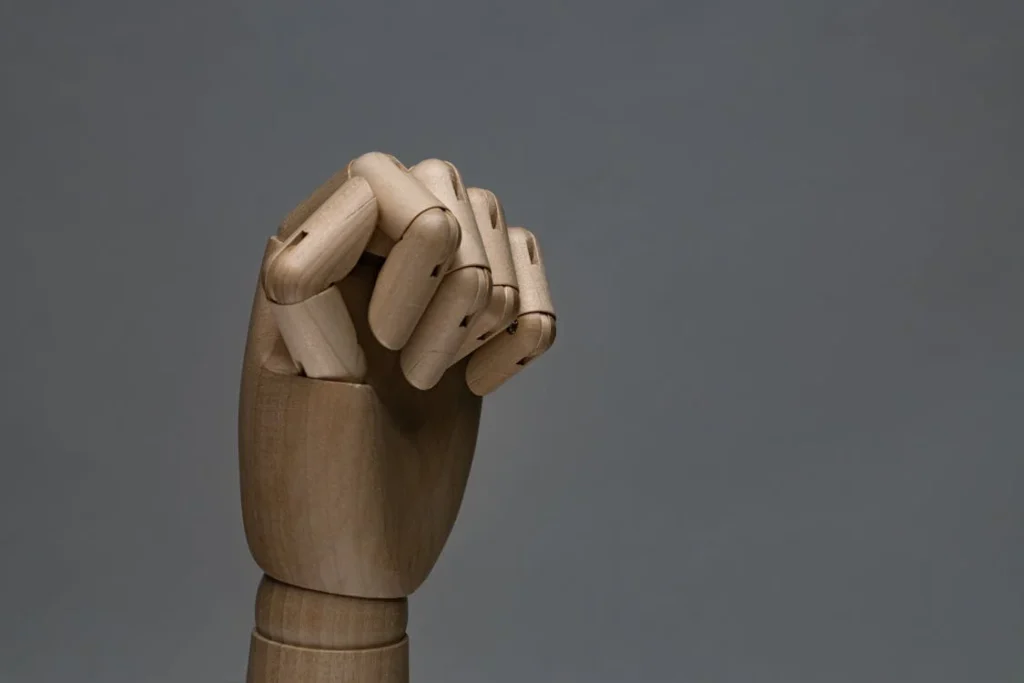
Turning Shared Goals into Shared Strength
Why Doing It Together Feels Less Scary
Starting something new is always scary. But when that “something” is learning to use a prosthetic, especially a high-tech one like the Grippy™ Bionic Hand, it can feel overwhelming. You’re not just figuring out how to use a device—you’re learning how to trust your body again. And trust takes time.
That journey becomes easier when you don’t have to walk it alone.
Gamified rehab gives people a common path. Everyone begins at Level 1. Everyone learns to control movement, build grip strength, and fine-tune their coordination step by step. But when users see that others are on that same journey, fear turns into connection. Frustration turns into shared understanding. A challenge that once felt heavy becomes something they can laugh about, talk through, or work on together.
This sense of togetherness reduces fear. It reminds people that it’s okay to struggle—and even better when you do it with others who care. When people go through it as a group, they move forward with more courage.
Stories That Spark Hope and Action
In every group, there’s someone who inspires others. Maybe it’s the person who kept showing up even when they had a rough week. Maybe it’s someone who learned to hold a cup again after months of trying. Maybe it’s a quiet user who finally shared their first video of a successful task.
These stories matter.
In gamified rehab, each small story becomes a source of hope. When users share screenshots of their badges or post about completing a hard level, they’re not just showing progress—they’re showing what’s possible. For someone else who’s just starting or feeling stuck, that story can be the spark that gets them going again.
At RoboBionics, we’ve seen users become role models without even realizing it. By simply showing up and sharing their journey, they lift others. That’s the quiet strength of peer-supported gamification. You don’t need to be a coach or a leader—you just need to be present. And that presence helps others feel brave enough to keep going.
Making Accountability Feel Friendly
We all know how easy it is to skip a day, delay a task, or put off practice—especially when no one’s watching. But when you’re part of a group that’s walking the same path, accountability shows up differently. It’s not pressure—it’s presence.
In a gamified environment, knowing that your peers are practicing, checking in, and moving forward creates a kind of gentle motivation. You don’t want to fall behind—not out of fear, but because you want to share in their success. You want to be part of the progress. That feeling turns into consistency.
The beauty of this system is that it works without anyone needing to “push” anyone else. A simple message like “Did anyone try the new challenge today?” is enough to get someone back on track. Seeing others active in the app makes you want to open it too. That’s how friendly accountability works. It supports, not scolds.
And when people show up consistently, results follow. Muscles strengthen. Control improves. Confidence rises. All because they felt seen, supported, and gently nudged by those who care.
From Online Connections to Real-World Confidence
At first, the connection in a gamified peer setting might feel digital. A message here. A reply there. A thumbs-up on someone’s score. But over time, something real begins to form. Trust. Friendship. Shared purpose.
These small moments begin to change how users feel not just during training, but in their daily lives. A user who once felt nervous going out in public with their prosthetic might feel more confident because they saw others doing it too. A user who struggled to try a new grip might take the risk because someone else encouraged them the day before.
That growing confidence doesn’t stay inside the app. It shows up in job interviews, social gatherings, even grocery runs. Every digital cheer becomes a step toward real-world strength.
And that’s the bigger picture we’re working toward at RoboBionics. We don’t just want people to use their prosthetics—we want them to thrive with them. To live fully. Boldly. Proudly. And community-driven gamification is one of the most powerful tools to help make that happen.
Healing Becomes a Team Sport
In the past, recovery was seen as a solo mission. You did your therapy. You followed the doctor’s plan. You hoped for the best. But that’s no longer true.
Now, recovery can be a team sport.
Gamified peer support transforms healing into a shared experience. Users cheer for each other, learn from each other, and celebrate together. The success of one person lifts the entire group. That’s the kind of energy that keeps people moving, even on the tough days.
And the best part? It never feels forced. Because at its heart, it’s just people connecting through progress.
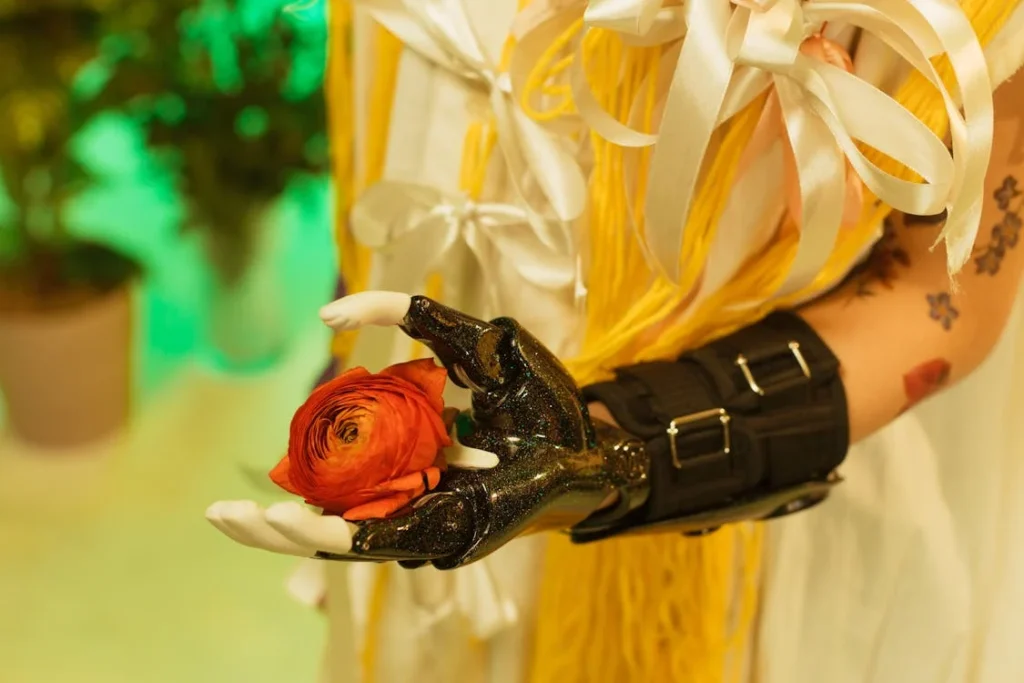
Designing for Connection: Building Peer Support into Every Step
Why Recovery Tools Must Be Social by Design
When we first designed our gamified rehab tools at RoboBionics, we weren’t just thinking about scores or achievements. We were thinking about people. We asked ourselves a simple question: what would make someone want to come back tomorrow? The answer wasn’t just more points. It was people.
People come back for encouragement. For shared stories. For the joy of knowing they’re not alone.
That’s why we didn’t just build a rehab system—we built a social experience. From the way our app highlights shared progress, to the notifications that celebrate peer achievements, everything is designed to spark connection. Not through likes or followers, but through real, meaningful moments.
When one user unlocks a milestone, the app gently notifies others. “Aarav just completed the Coordination Challenge—send a high-five?” It’s a small message, but it opens the door. Suddenly, users are talking, cheering, and supporting. Recovery becomes personal—but also shared.
This kind of design helps users build friendships over time. They may have never met in person, but they know each other through effort. Through trying. Through growing. And that kind of bond builds a community worth coming back to.
Safe Spaces Encourage Honest Sharing
Many people who go through a physical trauma find it hard to talk about their feelings. They bottle things up because they don’t want to worry others, or because they think nobody will understand. But when someone else shares a similar struggle, something opens up.
Gamified peer spaces create a safe place to open that door. The shared experience of the game—struggling through a tough level, figuring out how to control the prosthetic, unlocking a tricky skill—becomes the perfect bridge to deeper sharing. “This level was hard for me too. I almost gave up.” That small sentence is a quiet invitation: it tells others it’s okay to feel that way.
We’ve seen this play out again and again. Someone posts about a frustrating session with their Grippy™ Mech Hand, and instead of silence, they get replies: “Same here. But it got easier.” “I tried a new trick. Want to hear it?” “You’ve got this.”
Suddenly, what felt like failure becomes connection. Struggles become shared. And through that sharing, healing begins—not just in the body, but in the heart.
Learning from Peers, Not Just Professionals
Doctors and therapists play a huge role in recovery. But peers often fill a different gap. They give real-world tips that only come from lived experience. It’s one thing for a professional to say “Practice this grip,” and another for a peer to say, “This is how I did it with a cup of tea in the morning.”
Gamified platforms naturally encourage this kind of learning. The leaderboard doesn’t just show who’s ahead—it becomes a space where users ask each other questions. “How did you pass Level 4?” “What worked best for you when trying to hold a book?” These questions create a loop of shared wisdom that no textbook can match.
And because it’s all tied to personal progress, the advice feels grounded. It’s not theory—it’s action. It’s “I’ve done this, and so can you.”
This builds trust. And when users trust each other, they help each other more. They start mentoring without realizing it. They lead by example. That peer-to-peer learning becomes one of the strongest parts of the recovery process.
From Recovery Buddies to Real Bonds
What starts as a simple high-five or message in the app often turns into something deeper. Over time, users begin to check in with each other. They remember each other’s names, their goals, even their setbacks. They celebrate birthdays, milestones, and life events—even from a distance.
This isn’t just digital noise. It’s real friendship. Built on effort. On empathy. On the quiet understanding that comes from walking a similar path.
We’ve heard stories from users who started out as strangers and now video call each other weekly. Who went from silent practice to group chats filled with encouragement and ideas. Who call each other “recovery buddies”—and mean it.
These real bonds matter. Because they do more than make the app experience better. They make life better. They give people a sense of belonging that often disappears after an injury or amputation. They remind people they’re not broken—they’re growing, together.
Designing for Dignity
Everything we build at RoboBionics is made with dignity in mind. We don’t believe in pity. We believe in power. We believe that recovery is not about “getting back to normal,” but about moving forward into something new, something strong, something proud.
Gamified peer support is one of the purest forms of dignity in action. It’s not about experts telling you what to do. It’s about learning with and from each other. It’s about showing up, being seen, and being respected for every small step you take.
Whether someone’s earning their first star or helping others through the final stage, they matter. Their story matters. Their progress is worthy of celebration.
That’s what we want every user to feel. Not just that they are part of a program, but that they are part of a powerful, caring community.
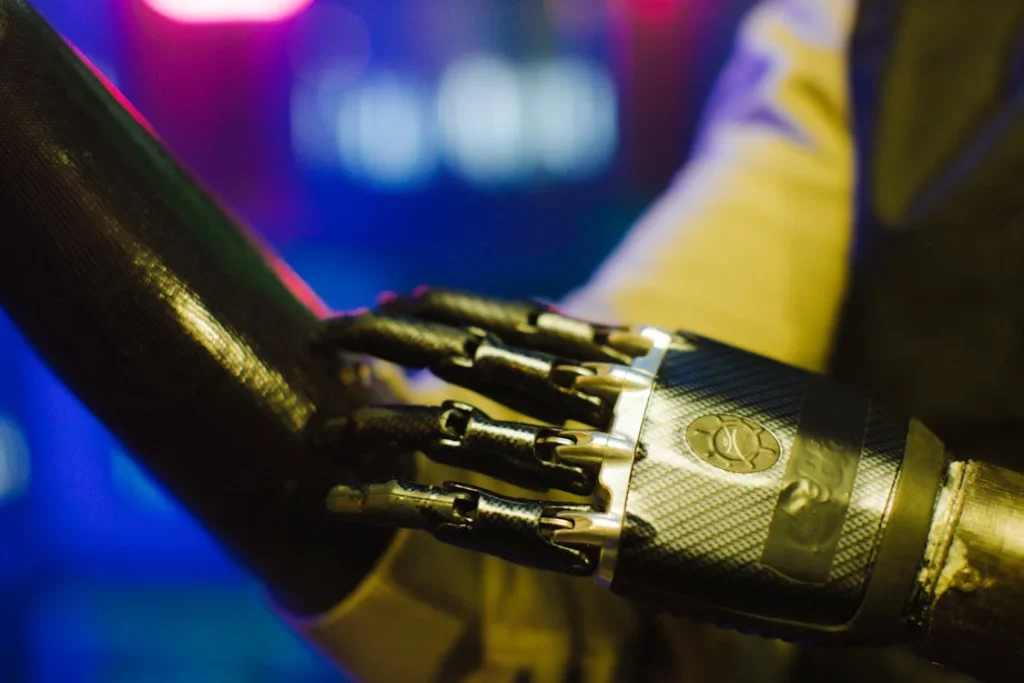
How Peer Support Transforms Motivation Into Momentum
Momentum Comes From Seeing Others Move Forward
When someone is just starting out with prosthetic training—maybe after an accident, an illness, or a life-changing surgery—they often feel stuck. They might worry that progress will take forever. They might doubt themselves. This moment is fragile. And what makes the biggest difference in this moment isn’t always more instruction. It’s inspiration.
That’s where peer support becomes a game-changer. When a user logs in and sees others making progress—completing levels, sharing milestones, talking about a breakthrough—it creates something powerful: momentum. That momentum isn’t just their own. It’s borrowed. It’s shared. And it pushes them forward.
In our gamified platform, this effect is natural. A user might log in feeling low but sees three others celebrating a new badge. Instantly, there’s a spark: “If they can do it, maybe I can too.” That quiet, internal nudge turns into action. One more session. One more try. One more step.
That’s how peer support transforms motivation into momentum. It turns “maybe later” into “why not now?”
Gamified Progress Keeps People Coming Back
One of the hardest parts of rehab is staying consistent. Progress comes slowly, and without clear feedback, it’s easy to feel like nothing is changing. But when users see their daily actions earn rewards—when points, levels, and stars reflect their effort—showing up becomes exciting.
Now imagine that, on top of those personal wins, they see their peers doing the same. It creates a shared rhythm. Like a dance everyone’s learning together.
This is what happens every day in our community. One person posts, “Finally got the Precision Badge today!” and another replies, “That one took me forever—congrats!” That moment builds connection, but it also reminds others that progress is within reach. It’s happening, and it’s real.
This dynamic—reward + peer energy—is what makes gamified recovery sustainable. It’s not a race. It’s a flow. One fueled by shared victories and steady encouragement.
And when people come back day after day, even if it’s just for a few minutes, the gains stack up. That’s where transformation begins.
Celebrating Effort, Not Just Results
In traditional rehab, the focus is often on the outcome. Can you pick up the bottle? Can you write with a pen? Those results are important, of course. But they don’t tell the whole story.
What about the effort it took to get there? The practice. The retries. The quiet determination behind every attempt?
Gamification makes that effort visible. It says, “You tried today. That matters.” And peer support makes that effort meaningful. When someone else sees your badge for five consistent logins and says, “I admire your dedication,” it hits differently. It sticks. It builds pride.
This shift—from result-based recognition to effort-based celebration—creates a healthier recovery mindset. Users stop seeing themselves as people trying to “fix” something. They start seeing themselves as people building something. That mindset is full of strength, not shame.
And in our experience, when someone feels proud of their effort, they keep going. They practice longer. They smile more. They believe in their ability to grow.
A Culture Where Struggles Are Shared, Not Hidden
In many rehab spaces, people feel like they need to hide their struggles. They think they have to stay positive all the time. But that kind of pressure can be harmful. It isolates people. It makes them feel like they’re the only ones finding things hard.
In our gamified peer spaces, the culture is different. Struggles are not something to hide—they’re something to talk about. To work through. To grow from. And that shift is everything.
When someone posts, “This new level is frustrating,” and gets replies like, “It was for me too, but hang in there,” they don’t feel weak. They feel human. They feel supported. That sense of honesty builds a kind of safety that’s rare—and very precious.
It also builds emotional resilience. When users are allowed to be real about their lows, they learn to move through them. They learn that setbacks aren’t the end—they’re just a part of the process. And with their peers walking beside them, they don’t give up.
That emotional strength shows up in their rehab. In their mindset. In their confidence. In their lives.
Empowering Leaders From Within the Community
Something beautiful happens when peer groups in gamified rehab mature. Certain users begin to take on quiet leadership roles—not because they were asked to, but because they feel called to support others.
These are the ones who answer questions, check in with new users, and offer encouragement when someone’s having a hard day. They might be the first to post after a new level is released. Or the one who celebrates everyone else’s wins.
This peer leadership isn’t about rank or recognition. It’s about heart. And it transforms the tone of the entire community.
At RoboBionics, we value these natural leaders deeply. We don’t see them as users—we see them as partners. They help us shape a space that is kind, strong, and filled with hope. A space where everyone is welcome and everyone belongs.
This kind of peer-led culture makes a lasting impact. It keeps the experience human. Warm. Real.
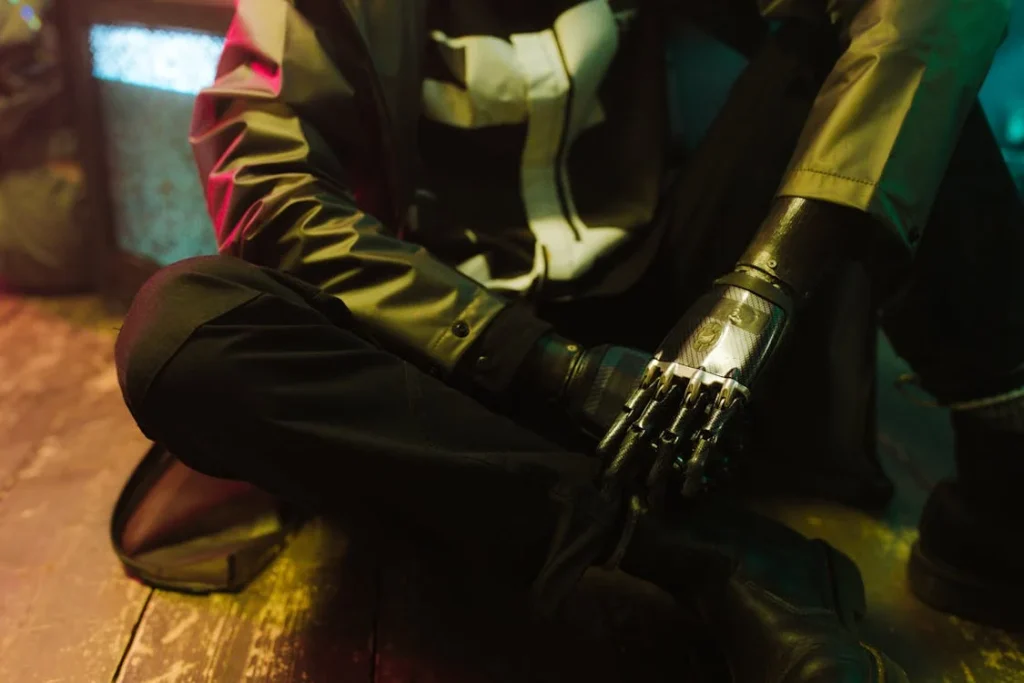
Emotional Wellness Through Connection: Mental Health in Focus
The Silent Struggle Behind Physical Healing
Behind every physical recovery story, there’s an emotional one that often goes untold. The trauma of limb loss, the sudden shift in identity, the quiet grief that follows—these are real and heavy experiences. People may smile through therapy, but inside, they might be carrying fear, shame, or sadness. The hardest part? Many feel like they have to face it alone.
Mental health during prosthetic recovery is just as important as physical health. But in most programs, it’s rarely talked about. At RoboBionics, we believe emotional healing needs just as much care—and gamified peer support can be a gentle yet powerful way to start.
By creating a space where users don’t just train, but talk, laugh, and listen to each other, we’re helping remove the loneliness that shadows recovery.
Small Conversations That Lighten the Load
What makes a difference isn’t always a deep therapy session. Sometimes it’s something much smaller—a comment from someone who gets it. “I had a rough day too.” “It gets easier, I promise.” These aren’t just words. They are lifelines. And in the context of gamified rehab, they often pop up naturally.
Someone might log into the app just to check their scores and end up chatting with someone they hadn’t spoken to before. That conversation might lead to encouragement. And that encouragement might be the reason they come back tomorrow, not just to train—but to feel better.
These micro-moments of connection have a massive impact. They chip away at isolation. They lift mood. They remind people that while recovery is personal, it doesn’t have to be lonely.
Joy as Therapy: The Mental Health Boost of Play
There’s something magical about play. It lowers stress. It calms the nervous system. It brings laughter, lightness, and energy. These things aren’t just nice to have—they’re vital for mental health.
Gamified recovery reintroduces play into people’s lives. After limb loss, many people feel serious all the time. They’re focused on medical appointments, adapting, pushing themselves. But when rehab feels like a game, and when peers are cheering you on, something changes. It becomes fun again. Even for just a moment.
That moment of fun matters. It releases endorphins. It brings joy back into the body. And over time, it helps rebuild the parts of a person that trauma tried to take away.
We’ve had users tell us the best part of their day wasn’t the physical progress—it was the laugh they had while competing with a friend. That laugh was healing, too.
Normalizing Vulnerability Without Shame
Mental health struggles thrive in silence. Shame keeps people quiet. But when vulnerability is met with kindness instead of judgment, that silence breaks. In our community, we make space for users to say, “I’m not okay today.” And what they hear back is never silence—it’s support.
Gamification helps here, too. It creates shared language that makes vulnerability feel safe. Instead of saying “I’m failing,” a user might say “Level 3 is beating me today.” That sounds like a game update—but it opens a door for deeper sharing. It allows people to ask for help without feeling exposed.
Over time, this culture builds emotional safety. People begin to open up more. Not just about the app or the hand, but about how they’re doing inside. And as that emotional honesty grows, so does healing.
The Role of Routine in Mental Health Recovery
Mental health thrives on rhythm. Consistent routines bring stability. When people feel chaotic or out of control, even small routines—like showing up daily to train—can restore balance.
Our gamified rehab platform naturally encourages routine. Points for daily check-ins. Badges for consistency. Gentle reminders to come back, even if it’s just for five minutes. These little nudges help users establish a daily rhythm.
And when that rhythm includes messages from peers, encouragement from the community, or even just shared silence with someone else training at the same time, it becomes more than a habit—it becomes emotional grounding.
That grounding can be the difference between a spiral and stability. Between staying in bed and getting up to try again.
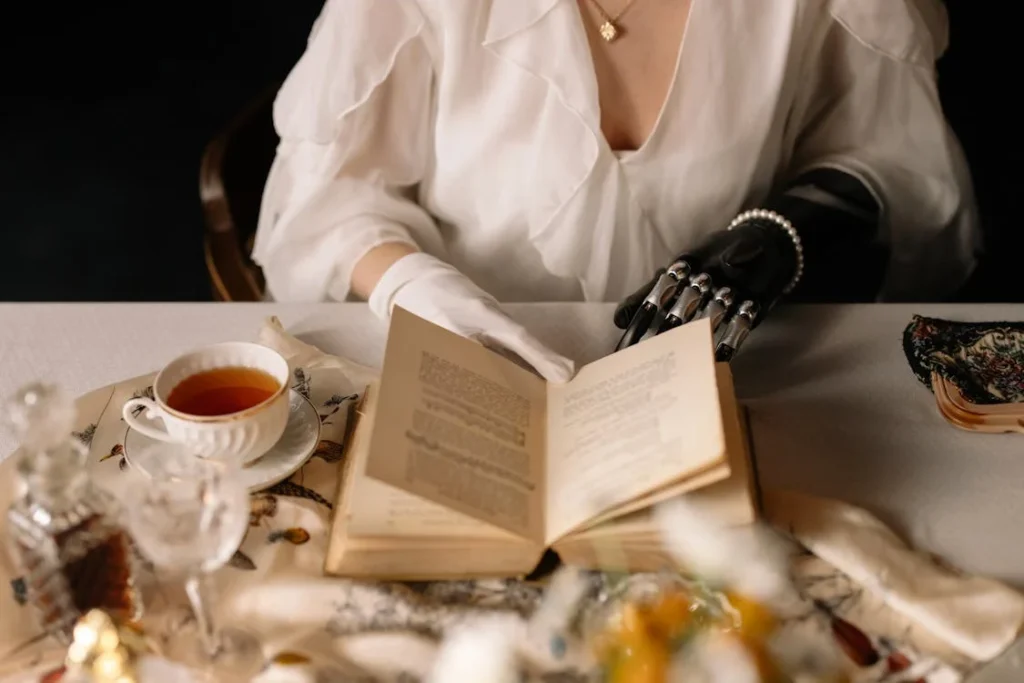
Extending the Circle: Family and Caregivers in Gamified Recovery
Healing Isn’t a Solo Act—It’s a Family Journey
When someone loses a limb, the impact doesn’t stop with them. It touches everyone around them—the spouse who helps with meals, the parent who attends every hospital visit, the friend who watches them try to tie a shoelace for the first time again. Recovery, even if centered on one person, becomes a shared emotional experience.
At RoboBionics, we recognize that caregivers and loved ones are part of the recovery story. That’s why our gamified rehab platform isn’t just designed for the user—it’s built for connection. We make it easy for family members to follow along, support, and even celebrate progress alongside the user.
This approach turns a lonely path into a shared one. It invites loved ones not just to watch from the sidelines, but to step in and walk beside.
The Power of Visibility: Letting Loved Ones See the Wins
Caregivers often feel helpless. They want to do more, fix more, ease more—but they don’t always know how. Meanwhile, users might be making progress in their practice but don’t always share those wins aloud.
Our platform bridges that gap. With features that allow shared access, families can see the badges earned, the levels completed, the consistency maintained. That visibility creates connection.
Now, instead of asking, “Did you practice today?” a loved one can say, “I saw you beat Level 5! That’s amazing!” That shift turns a check-in into a celebration. It strengthens bonds, removes tension, and builds encouragement into everyday conversation.
That shared view of progress changes the tone of recovery at home. It adds joy, pride, and teamwork into a space that often feels heavy.
Caregivers Need Encouragement Too
Supporting someone through recovery is exhausting. It’s full of unknowns. There are days when everything feels like too much—when the caregiver is just as discouraged as the person they’re helping. But unlike patients, caregivers rarely get support.
This is another area where peer-led gamified platforms can help. Not just by showing user progress, but by including caregiver-focused content, messages, and resources. Even a simple section that says, “Here’s how to encourage without pressure” or “Others have felt what you’re feeling too” can be a huge relief.
Some families in our community have created their own small caregiver chats—safe spaces to share their experience, offer tips, and simply feel less alone. We didn’t ask them to do that. The system gave them the tools—and they built the support themselves.
It’s proof that connection doesn’t only help users. It helps the people who love them, too.
Turning Family Into Cheerleaders, Not Just Helpers
One subtle but powerful shift that happens in gamified rehab is the change in how family members see their role. Instead of just being “helpers,” they become cheerleaders. Instead of reminding someone to practice, they start celebrating their effort. Instead of feeling stuck in logistics, they start feeling part of the joy.
We’ve had parents challenge their kids to beat their best grip score. We’ve had siblings sit beside each other during sessions, taking turns, making it a game. We’ve even had grandparents follow along with progress badges, calling just to say “We’re proud of you.”
These moments of play and pride are not side effects—they’re part of the recovery. They help the user feel loved, seen, and supported in ways that words can’t always reach. And they help the family heal too.
Because when everyone in the home feels part of something positive, the whole environment shifts. It becomes lighter. More hopeful. More united.
Designing Tools That Include Everyone
At RoboBionics, we design our technology to be inclusive—not just for the user, but for their support system. Our goal is to create a circle of healing, not just a line of treatment.
That’s why our app includes features like:
- Shareable progress reports that family can opt into.
- Push notifications that gently involve loved ones in celebrating milestones.
- Conversation starters and celebration prompts that make it easy to talk about success.
- Resources for emotional care, communication, and encouragement strategies.
These aren’t flashy features. But they make a quiet, powerful difference. They create a rhythm of support that extends beyond rehab sessions and into the daily life of every person involved.
Conclusion
Recovery is not just about getting stronger—it’s about feeling whole again. It’s about finding the courage to try, the strength to grow, and the people who remind you you’re not alone. At RoboBionics, we believe healing should never feel like a lonely climb. That’s why we’ve woven community and connection into every part of our gamified rehab experience.
When users train alongside others, celebrate each step, share their struggles, and lift each other up, recovery becomes more than physical—it becomes transformational. The points and badges aren’t just rewards. They are moments of pride, proof of effort, and bridges between people who understand.
Peer support doesn’t just inspire—it heals. It turns doubt into belief. Isolation into friendship. Practice into purpose.
And as we continue building tools like the Grippy™ Bionic Hand, our mission stays the same: to help people not only regain control—but rediscover joy, dignity, and connection in the process.
Join us. Heal with us. Grow with us.
Book a demo with RoboBionics today.
Let’s recover, together—one level, one step, one story at a time.



